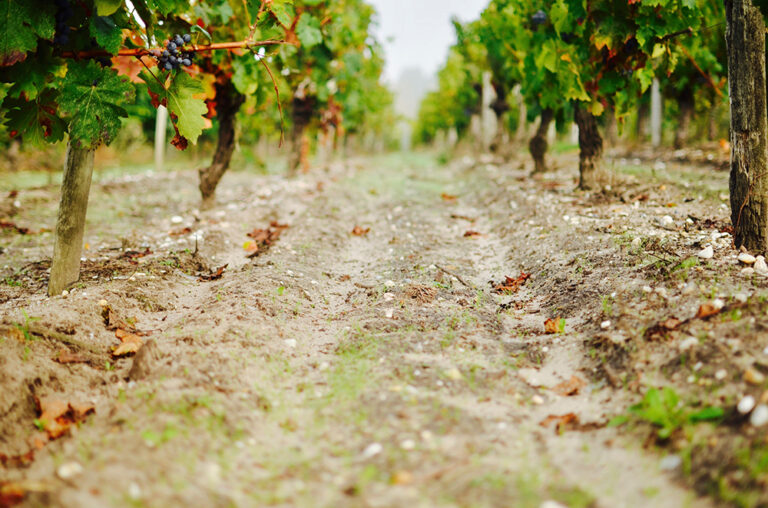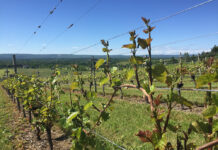
How can nature help? That was the basic message underlying three “rockstar” viticulture experts who presented at a packed panel session titled “Regenerative Agriculture – Next Step in Sustainability” at the Unified Wine & Grape Symposium.
The background context could be considered gloomy as wine sales are declining, winegrape growers in marginal areas are pulling out vines and new state policies aim to reduce synthetic chemical inputs. But leading academic researchers studying how growers can best harness nature’s regenerative processes say better days are to come, using more natural processes to grow better grapes and increase resilience in the face of climate change.
The trio of researchers presenting their latest findings on effective practices included Amelie Gaudin, associate professor of agroecology at UC Davis; Devin Rippner, USDA research soil scientist and adjunct faculty member at Washington State University; and Luca Brillante, assistant professor of viticulture at Fresno State.
Moderator Clint Nelson, then senior director for vineyard operations and grower relations at Bonterra Organic Vineyards, stressed regenerative agriculture can be commercially successful at scale as Bonterra has shown. The company adopted no- or low-till practices on its Mendocino estate vineyards in 2021. Though Bonterra’s estate vines are currently certified by the Regenerative Organic Alliance, he said organic farming is not for everyone in the state, but regenerative can be part of broader sustainability programs.
The state of California is currently working on a definition of regenerative agriculture.
“One of the main points of being a sustainable farmer is continuous improvement,” he said, giving shoutouts to sustainability groups in Lodi, the Central Coast, CSWA and Napa Green on their role in grower education and insights.

Evolve in Stages
Gaudin painted a portrait of three stages of sustainability in regenerative agriculture.
“Boosting beneficial ecological interaction… is a pillar of regenerative agriculture,” she said.
The first stage is increasing farm efficiencies in the use of inputs, the second is input substitution and the third is vineyard redesign based on agroecological principles, she said.
As an example of the second stage, she said, “We can think about replacing till with no till, and fertilizer with compost, for instance,” she said.
Further fleshing out the stages, she said, “The first level of a regenerative system is going to be a system designed primarily to build up soil health, cycles and sequestering carbon. A deeper system will also optimize for biodiversity and conservation overall,“ she said, adding the new systems should reverse decades of extraction.
“I’m an ecologist,” she said. “So I think about it based on ecological principles. What would be a rich system? First, it’s a system that maximizes biodiversity and implements soil health principles, such as maintaining living roots in the system, keeping the soil covered with living plants, or mulch, and frequent and diverse input of organic matter. So having a diverse set of type of organic inputs, whether it’s compost, cover crops, etc., into the system.

“Doing agriculture is about disturbing a system, right? So when we say ‘no disturbance,’ I think we’re not being very accurate,” she added. “It’s about being strategic in how we want to apply disturbance in the system.
“Eventually, what it comes down to is that you rely on biodiversity… in time, in space, above ground, but also below ground. And it also relies on the living soil ecosystem.”
Animal Integration
“We’ve seen a lot of grazing innovation happening now in California. I’ve been working on it for 15 years, and what’s happening right now is kind of cool,” Gaudin said. “Vineyards are a good entry point to think about sheep grazing.”
On average, in the New Zealand grape growers she surveyed, vineyard managers saved 2.2 mows and 1.8 herbicide applications from seasonal sheep grazing.
Sheep grazing impacts “on nutrient cycling, nitrogen availability in particular, and then just providing an additional value to the cover crop through forage and as well as providing tremendous benefit to soil biodiversity.
“I’ve been looking at soils for quite some time and I’ve never seen so much life in soils, and when you start putting an animal in there, and that makes sense because plants and animals have co-evolved. They’re supposed to be with each other,” she said.
Her latest work on grazing’s impacts on soil health has been published in Geoderma, entitled Long-term integrated crop-livestock grazing stimulates soil ecosystem carbon flux, increasing subsoil carbon storage in California perennial agroecosystems.

Earthworm Surprises
Rippner’s talk focused more on minimizing soil disturbance. But along the way, he and his team found earthworms played a bigger role than previously thought when it comes to water infiltration.
“It turns out in our cover crop system, infiltration was governed by the presence of earthworms rather than the plants in place,” he said. “We’ve increased biodiversity in our system. Now we have earthworms that are doing all this work for us. They’re actually disturbing our soil but in a thoughtful way, and increasing our infiltration. So this was a really cool and fun finding,” he said.
Pivot to the New Path
A native of northern Italy, Brillante brought regenerative down to a real-world level when he started his talk, and said, “If you’d asked my grandfather what agriculture meant for him, he was a small farmer, it looked a lot like he was mining with sweat and tears… he was extracting something from the land.
“Now three generations after, we’ve become much lazier, instead just saying, ‘You know what, I’m tired of fighting nature; can you just give me a hand?’ And so trying to have nature work on our side… basically that’s what regenerative farming is in my opinion.”
Echoing what his colleagues said, it’s about soil health, increasing carbon accumulation in the soil, promoting biodiversity, reducing toxicity in pest control, increasing nitrogen fixation (through the use of cover crops) and so on.
He said the new sustainable pest management (SPM) policies in California will reduce the use of fumigants, herbicides and insecticides, but he also painted a picture of cost-effective alternatives, relying on nematode-resistant rootstock, pheromones (rather than specific insecticides) and biodiversity.
“My role here is just trying to give you a little optimism and to take a look at different strategies that we can still farm our grapes by changing some of our practices,” he said.
“So in conclusion, the sustainable and holistic approach to vineyard management is possible at least with a change of mind.”






